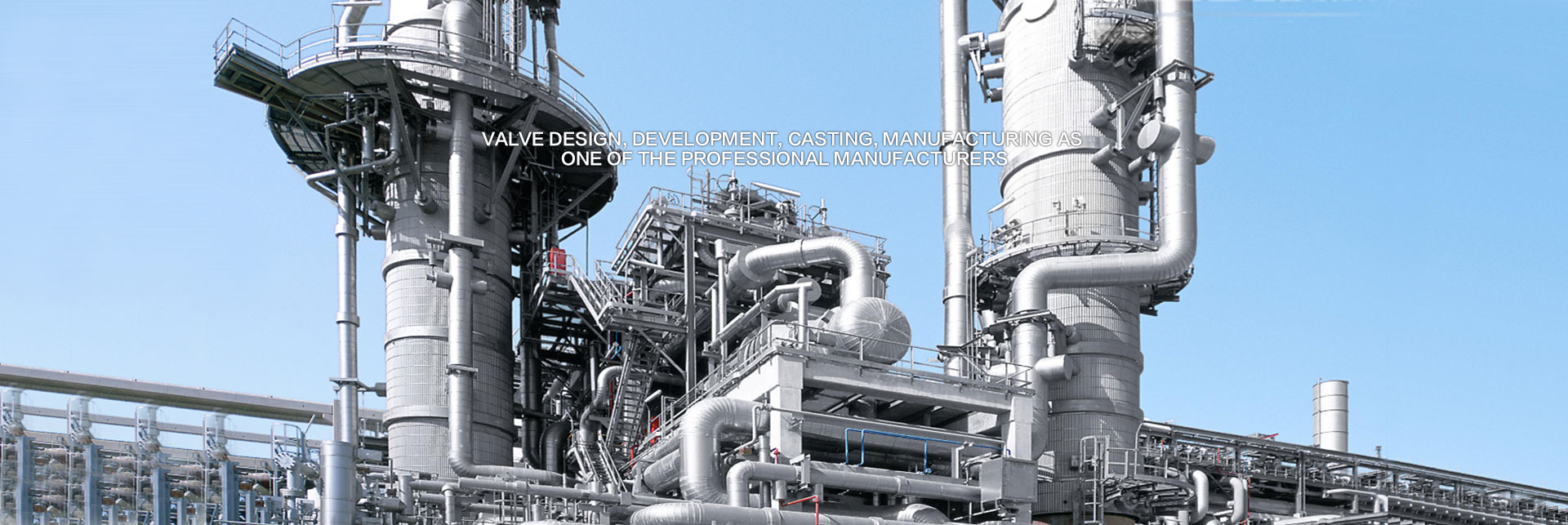How long does it take for the valve to repair the sealing surface and enhance airtightness?
After the valve is used for a long time, the sealing surfaces of the valve flap and the valve seat will wear and the tightness will be reduced. The repair of the sealing surface is a large and very important task. The main method of repair is grinding. For the heavily worn sealing surfaces, the welding surface is first lathed and then lapping.
The grinding of the valve includes:
Cleaning and inspection process;
Grinding process
Inspection process.
1 Cleaning and inspection process
Clean the sealing surface inside the oil pan, use professional cleaning agent, and check the damage of the sealing surface while washing. Microscopic cracks that are difficult to determine with the naked eye can be performed with a shading flaw detection method.
After cleaning, check the sealing of the disc or gate valve and the sealing surface of the valve seat. Check with red and pencil. Red red test red, check the sealing surface impression, to determine the sealing surface close to the situation; or use a pencil in the disc and valve seat sealing surface draw a few concentric circles, and then close the valve flap and valve seat, check the pencil circle Wipe off the situation to determine the sealing surface of the seal.
If the seal is not good, the standard flap can be used to inspect the valve flap or gate sealing surface and the valve body sealing surface to determine the grinding position.
2 grinding process
The grinding process essentially eliminates the need for a lathe cutting process. The pit or hole depth on the valve head or valve seat is generally within 0.5 mm, and grinding can be used for maintenance. The grinding process is divided into coarse, medium and fine grinding.
Coarse grinding is to eliminate scratches, indentations, pits, and other defects on the sealing surface, so that the sealing surface has a higher flatness and a certain degree of finish, which lays the foundation for the grinding of the sealing surface.
Coarse grinding uses grinding head or grinding seat tool, using coarse-grained sandpaper or coarse-grained grinding paste, its size is 80#-280#, coarse granularity, large amount of cutting, high efficiency, but deep cutting profile, rough surface of sealing surface. Therefore, as long as the rough grinding of the valve head or valve seat pitting can be removed.
Medium grinding is to eliminate coarse lines on the sealing surface and further improve the flatness and smoothness of the sealing surface. The use of fine-grained sandpaper or fine-grained abrasives, with a particle size of 280#-W5, fine-grained, and a small amount of cut, is beneficial to reduce the roughness; at the same time, the corresponding laps should be replaced and the lap should be cleaned.
After grinding, the contact surface of the valve should reach light. If you use a pencil to draw a few strokes on the valve head or seat, turn the valve head or valve seat in one turn, and you should erase the pencil line.
Fine grinding is the last process of valve grinding, mainly to improve the smoothness of the sealing surface. Fine grinding can be used W5 or finer parts and engine oil, kerosene, etc. diluted, with the valve's valve head against the valve seat grinding, without playing, this is more conducive to the sealing surface of the seal.
Grinding usually rotates clockwise around 60-100°, then rotates around 40-90° in the opposite direction, gently grinding for a while, must be checked once, to be shiny and shiny, and can be seen on the valve head and valve seat To a very thin line, when the color is black and bright, then gently rub it several times with oil and clean it with a clean gauze.
After polishing, remove other defects, that is, they should be assembled as soon as possible so as not to damage the worn valve head.
Hand-grinding, whether rough or fine-grained, is a grinding process that combines lifting, lowering, spinning, reciprocating, tapping and reversing. The purpose is to avoid duplication of the trajectory of the abrasive particles, so that the lap and the sealing surface are uniformly ground, and the flatness and smoothness of the sealing surface are improved.
3 inspection stage
The inspection stage is always carried through during the grinding process. Its purpose is to keep abreast of the grinding situation at all times and to be aware of the fact that the grinding quality meets the technical requirements. It should be noted that different grinding tools should be used when grinding different valves in order to increase the grinding efficiency and ensure the grinding quality.
When the valve is grinded, it is a very meticulous job. It needs constant understanding, exploration, and improvement in practice. Sometimes it grinds very well. However, after installation, it is still leaking from the steam leakage. This is because there is an erroneous imagination in the grinding process. Hand grinding rod is not vertical, skew, or the size of the lap has a deviation.
Because the abrasive is a mixture of abrasive and slurry, the slurry is just normal kerosene and motor oil. Therefore, the key to the correct selection of abrasives is the correct choice of abrasives.
4 How to choose valve abrasive correctly?
Alumina (AL2O3) Alumina, also known as corundum, has a high hardness and is very common. Generally used to grind workpieces such as cast iron, copper, steel and stainless steel.
Silicon Carbide (SiC) Silicon carbide has two types, green and black, with higher hardness than aluminum oxide. Green silicon carbide is suitable for grinding cemented carbides; black silicon carbide is used to grind workpieces of brittle materials and soft materials such as cast iron, brass and so on.
Boron carbide (B4C) is harder than diamond powder and harder than silicon carbide. It is mainly used to grind hard alloys instead of diamond powders and grind hard chromium plating surfaces.
Chromium Oxide (Cr2O3) Chromium oxide is a highly rigid and extremely fine abrasive. Chromium oxide is often used in hardened steel lapping and is generally used for polishing.
Iron Oxide (Fe2O3) Iron oxide is also a very fine valve abrasive, but its hardness and grinding effect are worse than that of chromium oxide. Its use is the same as that of chromium oxide.
Diamond powder is crystalline cerium C, which is the hardest abrasive and has good cutting performance. It is especially suitable for grinding hard alloys.
The classification and application range of common abrasives are shown in the table (click to enlarge)
In addition, the thickness of the abrasive grain size (particle size of the abrasive) has a significant effect on the grinding efficiency and the surface roughness after grinding. During rough research, the surface roughness of the valve workpiece is not high. In order to improve the grinding efficiency, coarse-grained abrasives should be used. When lapping, the grinding allowance is small and the surface roughness of the workpiece is high. Fine-grained abrasives can be used.
The coarseness of the abrasive on the sealing surface is generally 120# to 240#, and the lapping is W40 to 14.
Valves modulate abrasives, usually by adding kerosene and motor oil directly to the abrasive. Abrasives blended with 1/3 kerosene plus 2/3 oil and abrasive are suitable for coarse grinding; abrasives blended with 2/3 kerosene plus 1/3 oil and abrasive can be used for lapping.
When grinding a workpiece with high hardness, the effect of using the above-mentioned abrasive is not ideal. At this time, three parts of abrasive and one part of heated lard can be blended together to form a paste after cooling. When used, add some kerosene or gasoline and mix well.
5 Selection of abrasive tools
Valve disc and valve seat sealing surface due to different degrees of damage, can not directly study, but first with a certain amount of pre-made and specifications of the false flap (that is, grinding head), false seat (that is, grinding seat), respectively, on the valve Seat, valve flap grinding.
Grinding heads and grinding bases are made of plain carbon steel or cast iron. The dimensions and angle should be the same as those on the valves and valve seats.
If grinding is done manually, various grinding rods need to be configured. Grinding rods and laps should be assembled properly and cannot be skewed. In order to reduce people's labor intensity and speed up grinding, electric grinders or vibratory grinders are often used for grinding.









